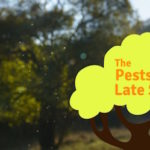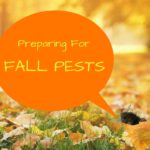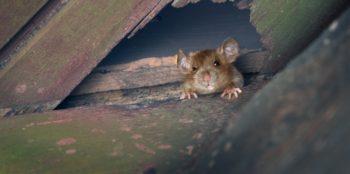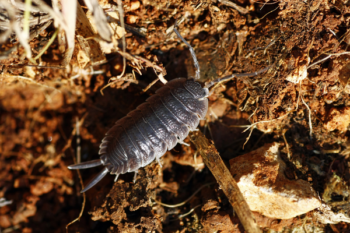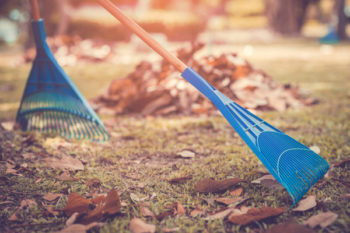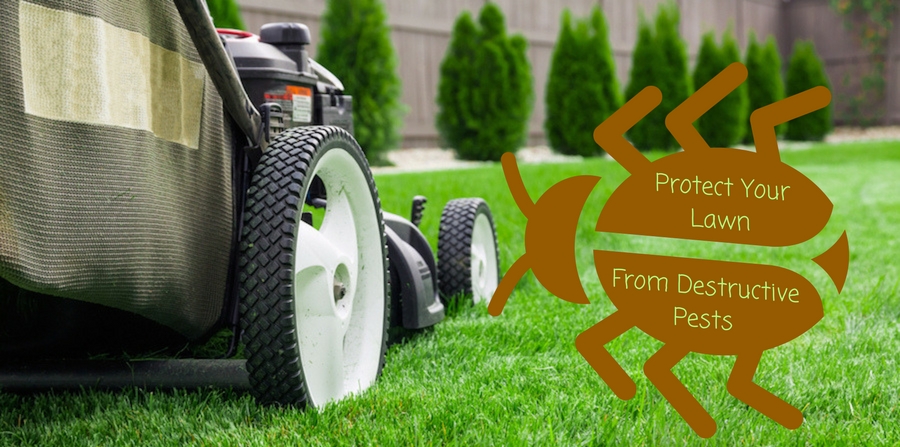
Summer may be coming to an end, but that doesn’t mean we get to stop worrying about our lawns just yet. In fact, fall is the most active season for many lawn-destroying pests, like box elder bugs and other beetles. The last thing you want is to have spent all summer meticulously grooming your lawn, only to see it destroyed at the finish line.
Luckily, it doesn’t have to end that way. There are a number of ways you can fight back against lawn-munching insects right up until the ground freezes. Protecting your lawn now will help ensure it comes back stronger than ever the next spring. Just follow these steps:
Mow, Trim, and Manage
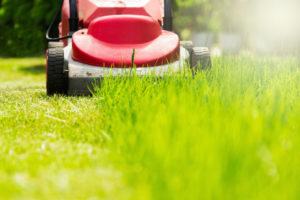
You should keep mowing your lawn in the fall right up until it turns brown and dies. Long, unkempt grass attracts pests and weeds. Bugs can eat grass and feed their larvae with its root systems. Larvae can permanently damage your lawn and potentially create ugly brown spots. If the damage is extensive enough, large sections of your lawn may not regenerate in spring.
You should mow your lawn about as often as you did in summer, until you notice the grass is no longer growing. Make sure you bag the clippings, and rake up dead grass as needed. Along with mowing, it’s important to trim bushes, ornamental shrubs, and tree branches, too. Pick up any debris that falls onto your lawn, too. Depriving pests of easy food and shelter will make your lawn far less appealing to grass-gnawing opportunists, and much healthier, too.
Pull Out Grubs
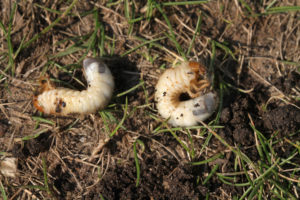
When larvae feeds on root systems for long enough, the grasses’ ability to absorb nutrients from the soil is diminished. The grass won’t get the sustenance it needs to grow, and it will wither and die. Dead grass looks crunchy and brown. Larvae can eat certain parts of your lawn and leave others untouched, creating brown spots of dead grass in an otherwise healthy yard.
If you have a brown spot, you should cut about 1 foot down into the turf at one of its edges. Roll away the area with the damaged grass and look at the dirt below. Chances are, you’ll find several beetle grubs. If you find more than 5, you’ll need to treat your grub infestation immediately. There are store products available for this task at most hardware stores and nurseries, or we could help you with it. Don’t leave the grubs in your lawn until spring.
Don’t Overwater
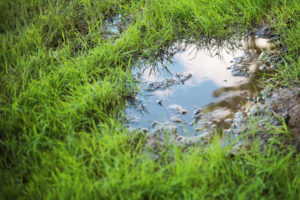
Pests of all varieties are attracted to moisture, especially if it’s easily accessible. When you water your lawn too much, the dirt and root systems can’t soak up and absorb all the moisture you’re introducing. Instead, excess water sits on the surface.
Remember: even though your lawn will keep growing in fall, it probably won’t need as much water as it did during the summer. As temperatures cool and nights grow longer, dew lasts longer and less moisture evaporates in the sun. Be careful not to overwater your plants, and ensure your lawn has proper drainage in case of heavy rains. If you notice persistent puddling or wet spots in low areas of the lawn, you should consider leveling out that part of the yard.
Weed
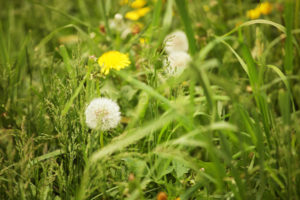
Undesirable plants like weeds, dandelions, moss, ivy, brambles, and crabgrass don’t just choke out your grass and other plants; they attract pests too. Wild, growing weeds attract all kinds of different bugs, from gnats to flies. Wild flowers may attract wasps or bees. Weeds can provide a much-needed food source for pests during the fall. Some weeds may even attract wild animals like deer or raccoons to your yard.
You probably got used to weeding this summer, so don’t stop now! When you’re pulling weeds out of your yard, make sure you pull out the whole root system. This will ensure the weed plant doesn’t regenerate. You could also administer localized herbicide from a spray tool–but be careful not to kill any plants you want alive! Dispose of weeds in your garbage or composting. Never pull out weeds and then leave them in your yard, or you just basically made a garden salad for pests! “Garden salad”, see what we did there?
You worked hard this summer making sure your lawn stayed healthy and beautiful. Don’t let all that hard work go to waste thanks to some dumb bug. Follow these yard maintenance tips until the ground freezes, and you’ll get to enjoy a healthy and happy yard next spring.
Even if you do end up with yard pest problems–or any other kind of pest problem for that matter–don’t despair! Just call Griffin and we’ll help make sure the grass is greener on the other side.

